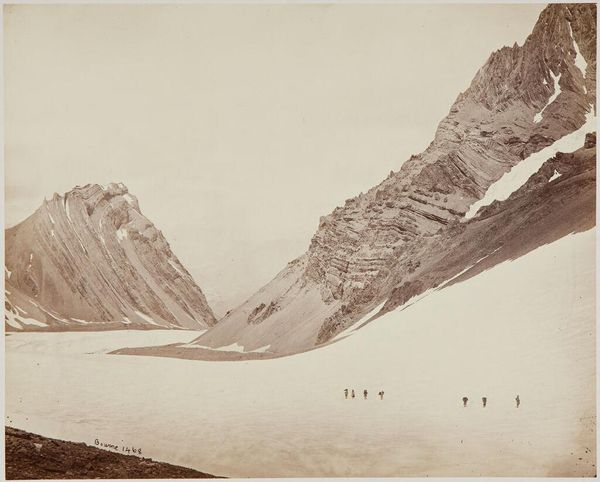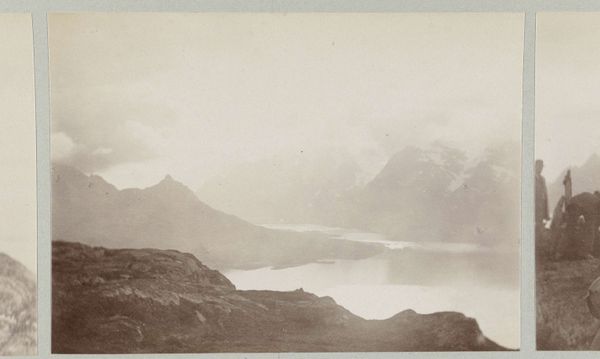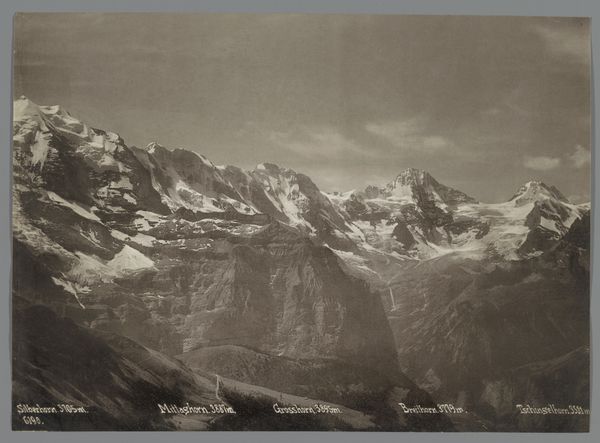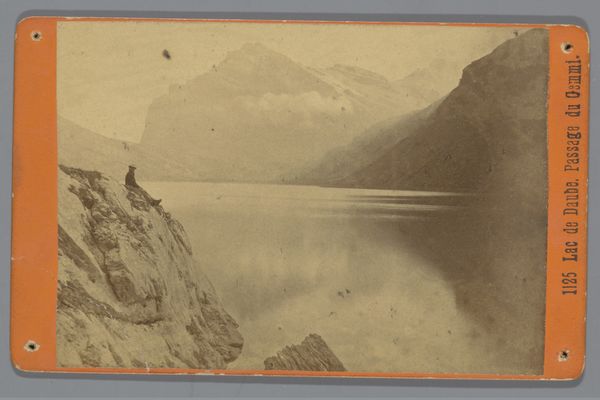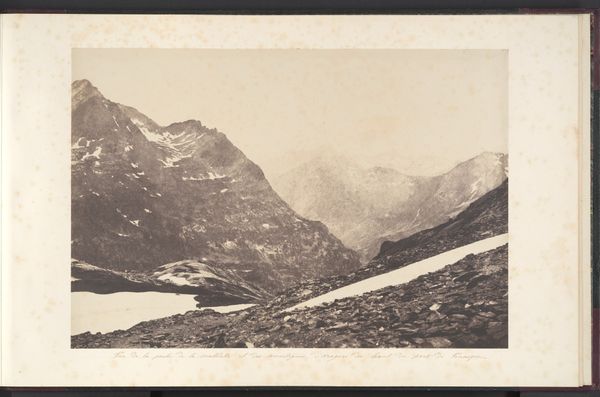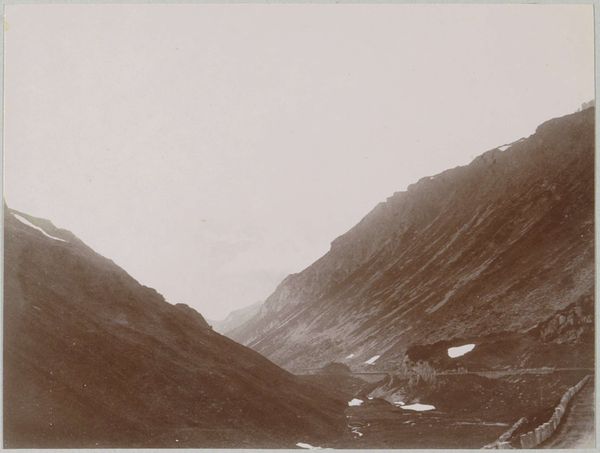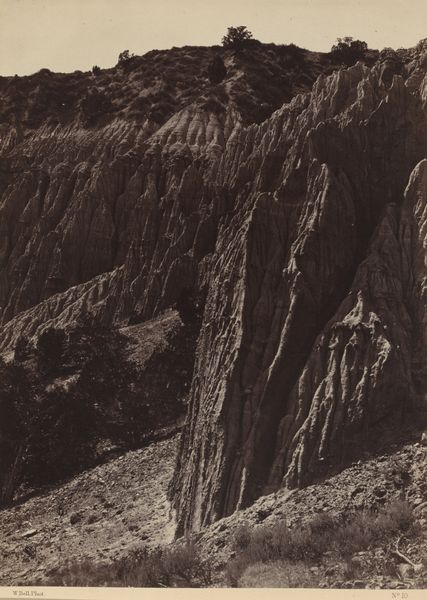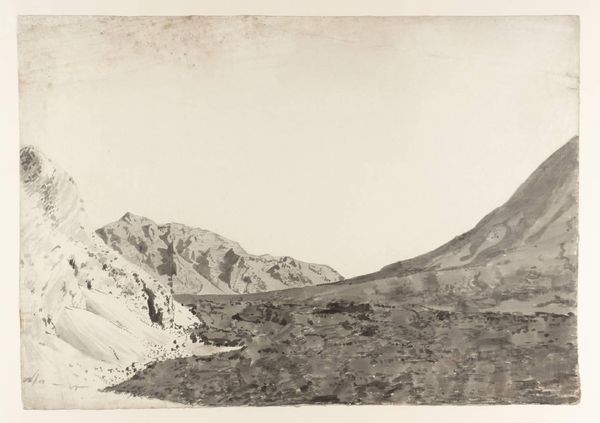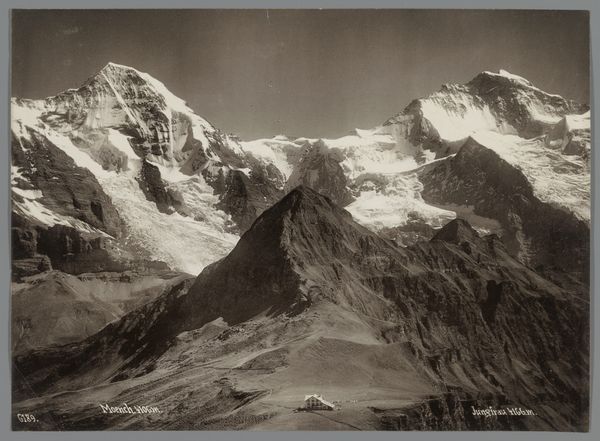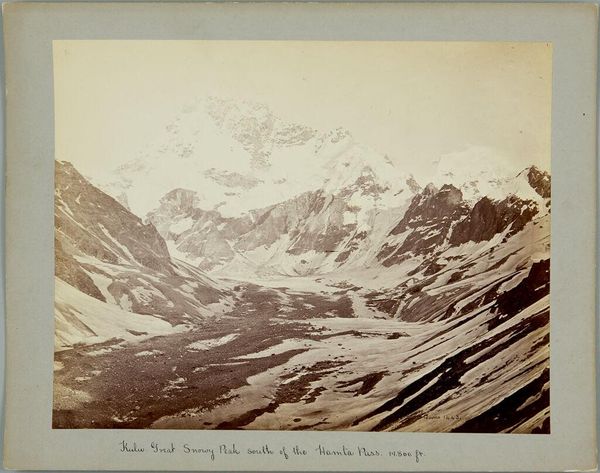
Dimensions: 23.7 x 29.6 cm (9 5/16 x 11 5/8 in.)
Copyright: Public Domain
Editor: This is Samuel Bourne’s "The Manirung Pass," from the 1860s, an albumen print depicting a landscape in what I believe is India, given the title. It's quite striking! The sheer scale of the mountains contrasted with those tiny figures in the foreground evokes such a sense of… well, insignificance. What do you make of this piece? Curator: It’s fascinating to consider this photograph in the context of British colonialism. Bourne was British, and his photographs of the Himalayas served a specific purpose: to document and visually claim territory. These weren't objective documents; they were tools used to reinforce British power. Notice how the figures are dwarfed, reinforcing the idea of nature's grandeur but also the British ambition to conquer and tame this vast landscape. How do you see the role of Romanticism at play here? Editor: I see the Romantic ideals, definitely, in the sublime nature and the insignificance of humans, as I said, but, doesn't Bourne’s profession, basically a colonial photographer, clash with those ideals? Curator: That's a crucial point. The “untouched” wilderness that Romanticism often celebrates was, in this case, being actively transformed by colonial projects. Bourne’s photographs were circulated widely in Britain, shaping perceptions of India as both an exotic land and a resource to be exploited. It created this very appealing, yet misleading vision for British society. Consider the power dynamics embedded in image-making during this period. Who had the right to represent these lands, and for what purposes? Editor: That's powerful. I hadn't considered the photographs as such active agents in the colonial narrative. I was initially drawn in by the aesthetic, but now I understand how they functioned within a much larger historical and political context. Curator: Exactly! Understanding the cultural and historical framework is essential to grasping the true impact of such artwork, exceeding what catches the eye initially.
Comments
No comments
Be the first to comment and join the conversation on the ultimate creative platform.
